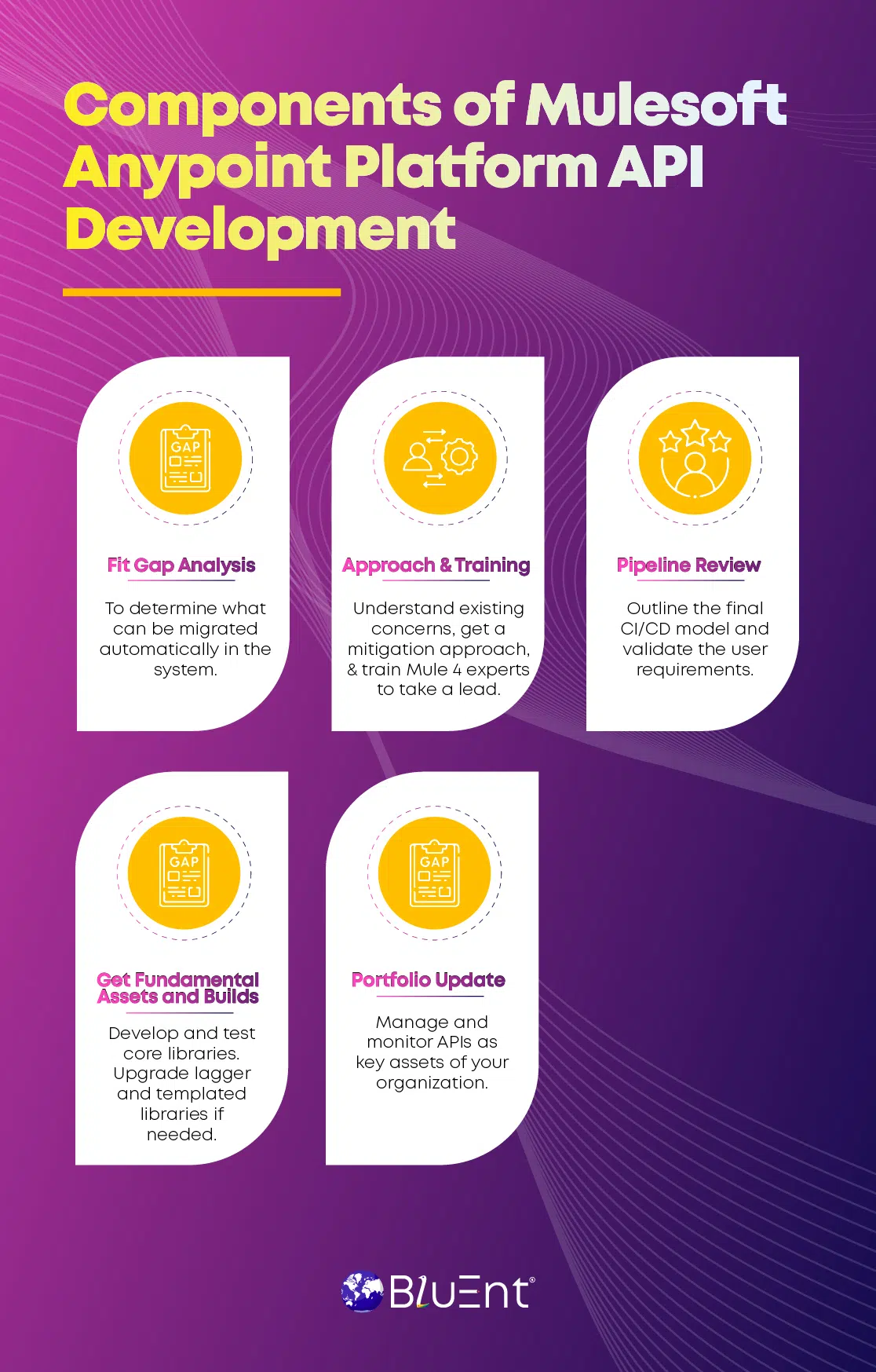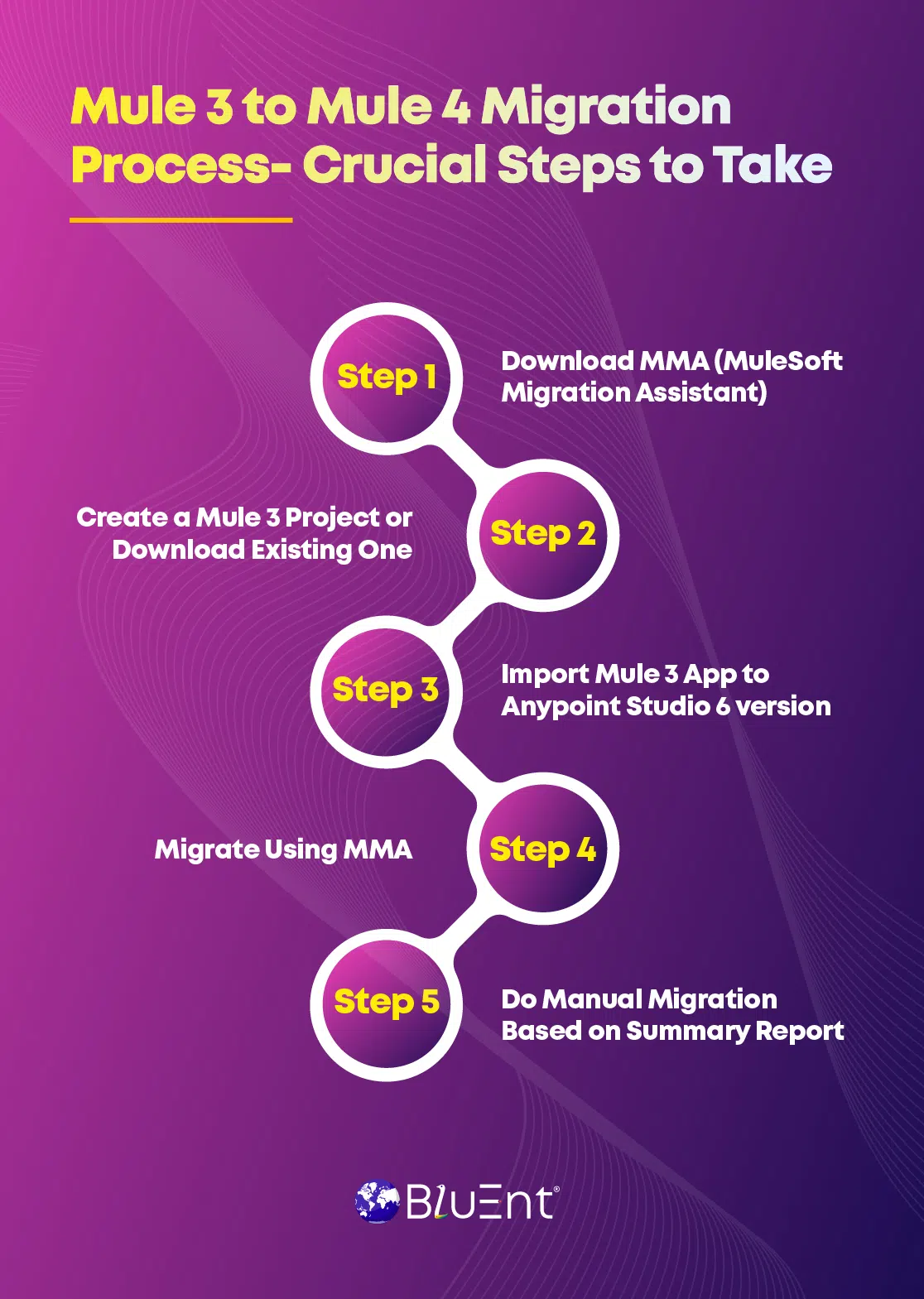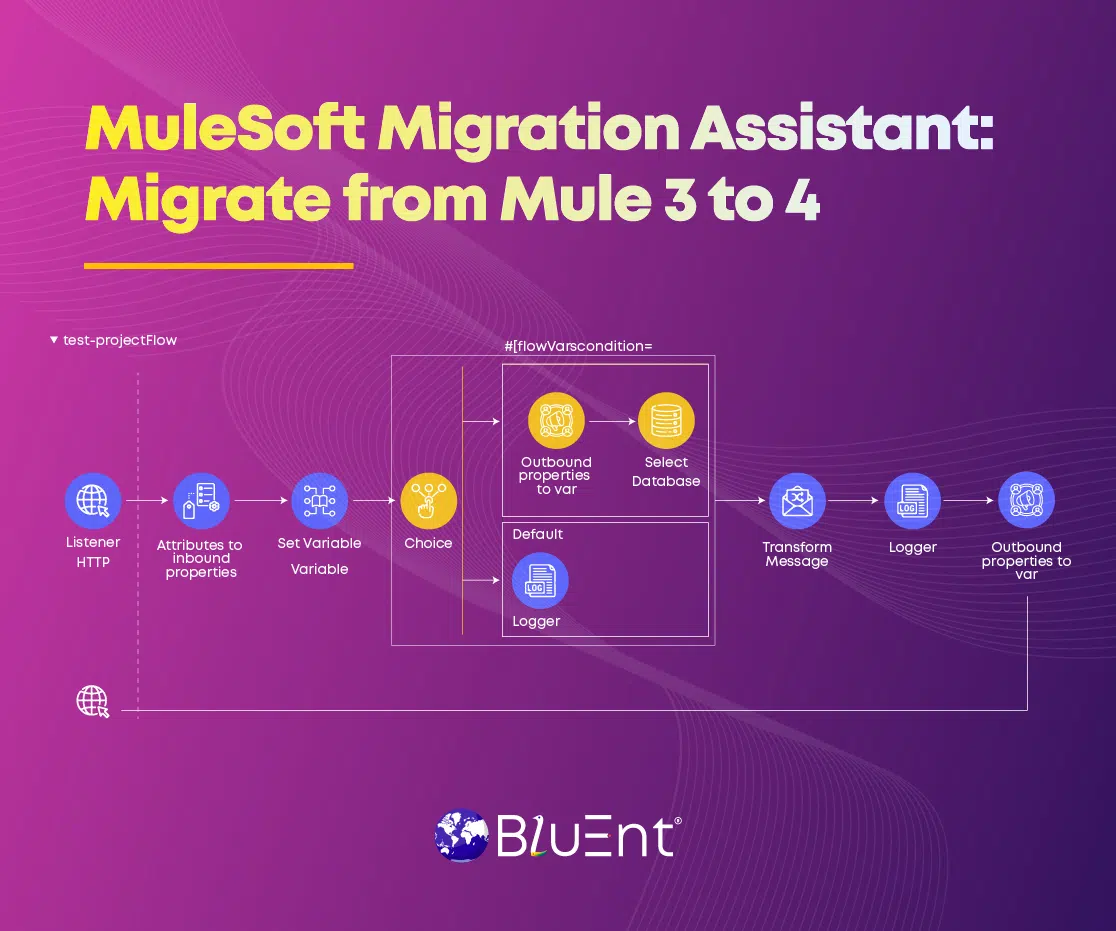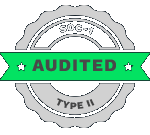Enterprises using MuleSoft for data integration are gearing up for Mule 3 to Mule 4 migration. After all, the company has announced the discontinuation of Mule 3 runtime engine support in 2024.
The mule runtime engine is used for seamless enterprise data management, app integrations, and API-led connectivity. With the launch of the Mule 4 version, MuleSoft users and firms are poised to upgrade their existing Mule 3 projects to get more features and valuable add-ons.
Want to migrate from Mule 3 to 4? It's advised to get a checklist of prerequisite tools and resources beforehand to migrate using Mulesoft migration assistant (MMA).
Let's start with a brief overview of Mule 4 and why your business needs to adopt the same. In this blog, you will also come across a step-by-step guide to migrating from Mule 3 to 4 using MMA.
Table of Contents:
What is Mule 3 to Mule 4 Migration?
The launch of Mule 4 deserves your attention if your Application Programming Interfaces (APIs) are still running on Mule 3.
No denying Mule 4 is more upgraded and powerful than Mule 3. Its prime intent is to future-proof your database integration facilities with a robust, secure, and advanced management system.
There are two approaches for migrating the code from Mule 3 to 4. One can either write new codes in Mule 4 or migrate the applications to Mule 4 using MuleSoft Migration Assistant (MMA).

Being equipped with a number of new and improved features, Mule 3 to Mule 4 migration using MMA will ensure:
More Efficient Integrations: Reuse APIs, components, and function flow in a standard manner.
Better Performance: Integrate a powerful runtime engine for significant performance enhancements.
Quick Data Accessibility: View big data and relevant insights across a parallel stage and environment.
Simplified Management of Multiple Apps: Modernize and monitor your data infrastructure with simplified deployment and database migration for Mule 3 to Mule 4.
Reduced Downtime: Improve error handling to maintain operational efficiency and process uptime.
More Innovations: Introduce more valuable add-ons and features with MuleSoft API-led connectivity and integrations.
The cloud-enabled capabilities of Mule 4 are extended to its development model for the web. They contribute to development agility, security, and faster time to market in varying internal environments.
Ready for MuleSoft Migration? Let's discuss a few must-haves to successfully migrate from Mule 3 to Mule 4.
Recommended Reading:
Mule 3 to Mule 4 Migration: Things to Know Before Getting Started
Keeping up with APIs in use is one of the significant challenges of Mule 3 to Mule 4 migration.
MuleSoft developers must ensure that end users can access, run, and manage these APIs throughout the migration.
Companies using MuleSoft for database design and development may be planning to migrate from Mule 3 to 4. If you're one of them, then here are a few things to keep in mind while defining a migration strategy:
Decide if RAML (RESTful API Modeling Language) refactoring is required.
Be clear about the naming conventions or standards you may be using.
Check if you have custom Java implementations for backend apps, file handling, reading messages from queues, parsing, etc., or any customer components.
Determine the scope of reusability in the Mule 3 to Mule 4 migration project.
Besides considering the above-mentioned pointers, you must be decisive about your mule 3 to mule 4 migration approach.
MMA is preferable as it simplifies migration despite being unable to migrate everything.
Enterprise data management and analytics can upscale your business results and efficiency.
Know how big data management worksMule 3 To Mule 4 Migration Steps: A Must-have Guide
Note down these significant MuleSoft migration steps using MuleSoft Migration Assistant (MMA):

Step 1- Download MMA (Mulesoft Migration Assistant)
Download Mulesoft Migration Assistant to get started.

Make sure that your system is compatible with Java. Unzip the downloaded file next.
Step 2- Create a Mule 3 Project or Download Existing One
At this point, you need a Mule 3 application. You can use an existing application or create a new one from scratch.
One can download an existing application using MuleSoft Anypoint Exchange. One can build one using Anypoint Studio 6 version on your system.
Step 3- Import Mule 3 App to Anypoint Studio 6 Version
You must import the downloaded Mule 3 project into Studio 6 or the above version. Copy the path carefully before proceeding with the next step.
Step 4- Migrate Using MMA
This step is not so tricky if you're a MuleSoft-certified developer.
You are supposed to define two paths for Mule 3 to Mule 4 migration.
The first is ProjectBasePath for Mule 3 app path, while the second is destinationProjectBasePath, directing to where you want to keep the migrated Mule 3 to Mule 4 projects.
Here is a command for migrating Mule 3 to 4 using MMA:
$ java -jar mule-migration-assistant-runner-1.0.0.jar -mule version 4.3.0
-projectBasePath /Users/username/AnypointStudio-6
/querying-a-mysql-database-1.4.0-mule-application-example
-destinationProjectBasePath /Users/username/Downloads
/querying-a-mysql-database-mule4
You can run the same command for Mac OS and Windows. But make sure that you're using the downloaded and unzipped MMA path.
Also, pay more attention to the selected ProjectBasePath.
Step 5- Do Manual Migration Based on Summary Report
The final step involves manual migration process. You will be doing that to migrate the remaining connectors or components into the Anypoint studio.
Open Anypoint Studio 6 or 7 and import the migrated app to the studio. The connectors running in the in-process phase may also require the migration of inbound and outbound properties.
For manual migration, make sure that:
Visit the HTTP response tab and check for the changes that need to be made.
Convert in-bound properties to attributes.
Check the database configuration and query.
Great, you've successfully migrated from Mule 3 to Mule 4.
Recommended Reading:
Want to Upgrade from Mule 3 to 4? Hire MuleSoft-certified Developers at BluEnt.
Our MuleSoft migration tutorial is ideal for experts and beginners in database maintenance and integration domains. Data migration is not an easy task unless you've got certified professionals to take over your project.
At BluEnt, we're mastering the areas of world-class data integration and management for top-level enterprises, SMEs, and startups with over 20 years of global presence.
Our core expertise involves business consulting, CAD and engineering, and IT services. We specialize in enterprise data management, big data implementation, big data analytics and insights, and predictive analytics.
More than 110 leading brands trust us and have delivered 1100+ projects. Our portfolio features renowned enterprises and firms from various industries.
Need trusted and certified experts for MuleSoft migration? Get in touch with our team today.
Frequently Asked Questions
When should a business plan the migration from Mule 3 to 4?
It's imperative to consider specific parameters before moving forward with Mule 3 to Mule 4 migration. Keep these pointers in mind to determine whether it's the right time to migrate or not:
Understand how the database infrastructure will change and work in Mule 4 environment.
Decide if your organization is open to updating existing and new MuleSoft-support applications.
Check the license expiration of Mule 3 and its variants.
Determine if all Mulesoft apps need to be upgraded to Mule 4.
Ensure your team is proficient and fully trained in Mule 4 migration.
How can MuleSoft Migration Assistant (MMA) be used as Mule 3 to Mule 4 migration tool?
MMA is the most preferred tool for MuleSoft migration from Mule 3 to 4. That is how it helps simplify the process:
Assists in the initial complexity analysis in the manual migration of Mule apps.
Eliminates manual efforts in code rewrites by transforming project structures into Mule 4 components.
Reduces repetitive migration tasks by simplifying plugin and API development on the open-source framework.





 How is the MuleSoft eCommerce Integration Platform Mitigating Retail Challenges?
How is the MuleSoft eCommerce Integration Platform Mitigating Retail Challenges?  Why MuleSoft MFA (Multi-factor Authentication) is Crucial to Your Enterprise’s Data Security?
Why MuleSoft MFA (Multi-factor Authentication) is Crucial to Your Enterprise’s Data Security?  MuleSoft Architecture: Working Mechanism and Applications
MuleSoft Architecture: Working Mechanism and Applications  How Does MuleSoft API Integration Resolve the Challenges in Banking and Finance?
How Does MuleSoft API Integration Resolve the Challenges in Banking and Finance? 
